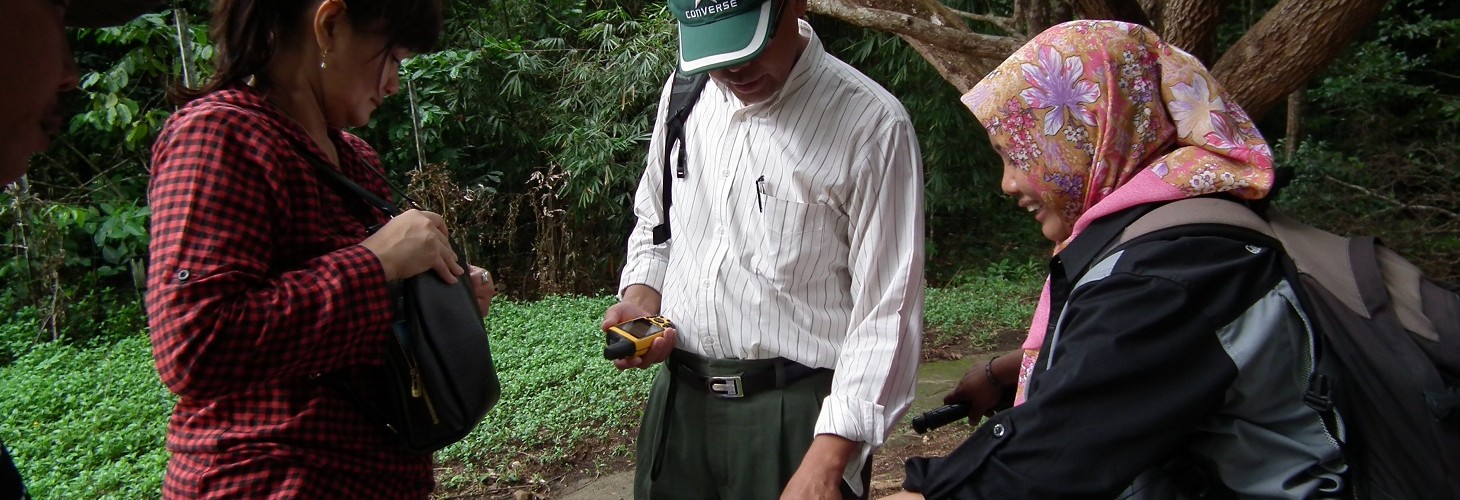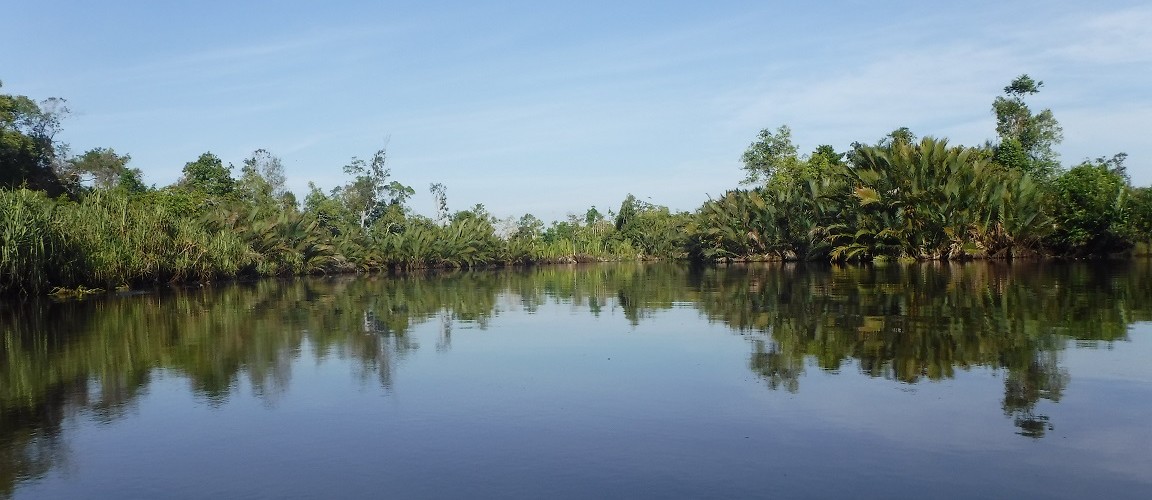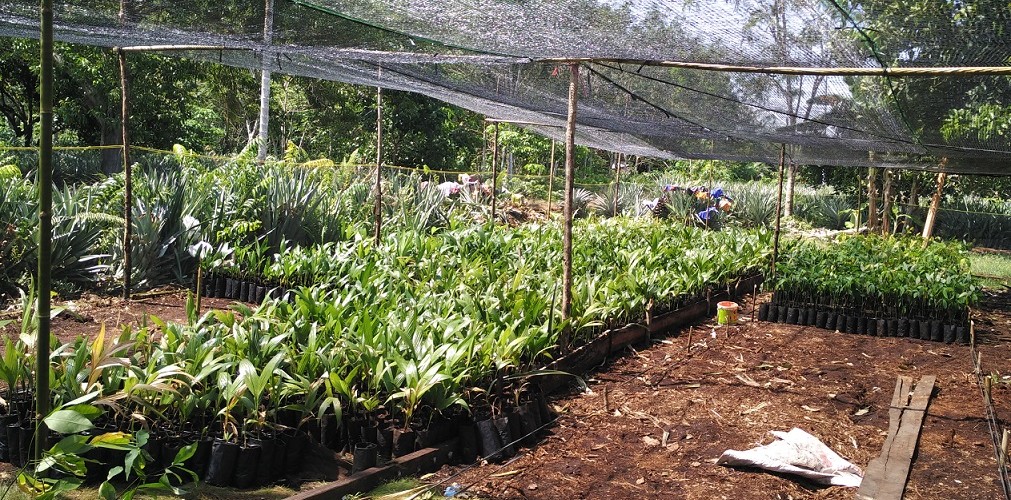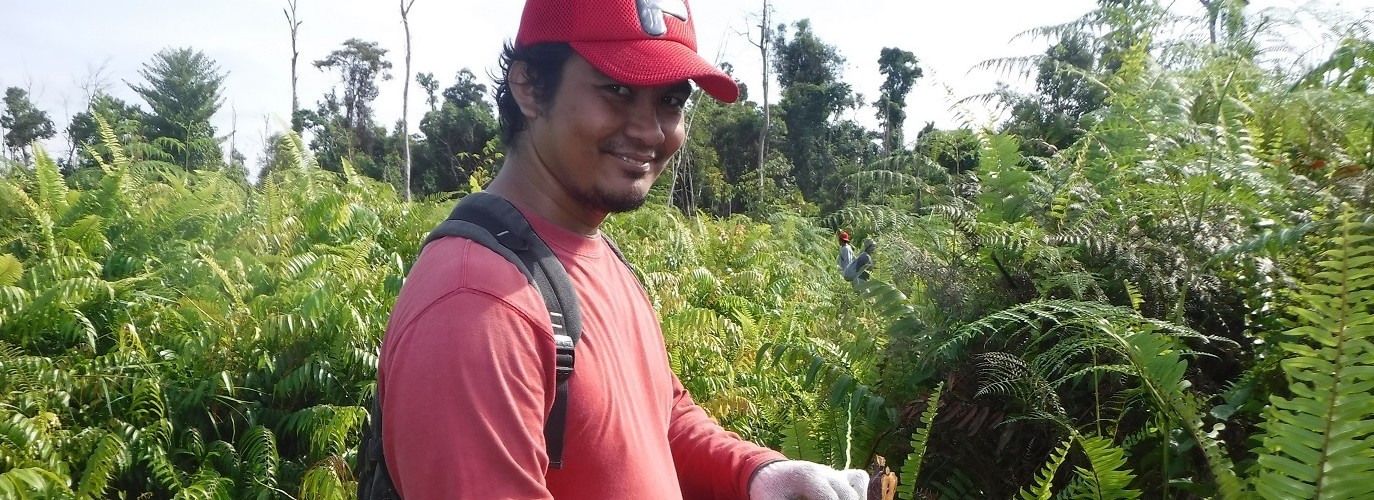By Syahik ‘Bani’ Nurbani, GPOCP Survey Coordinator
As you may recall, a few years ago we began conducting biodiversity surveys in our Customary Forests. This area represents nearly 7,500 hectares made up of five villages that are now legally protected from palm oil, mining and other destructive acts. GPOCP helped secure this land from encroachment and helped local communities obtain the legal right to manage the lands. These surveys provide baseline data so that over time we can monitor changes in the plants and animals that call this area home. These data will provide valuable information to compare with the past year and the years to come. In late April, we started our journey into this peat swamp to see how this region was doing.
 |
|
Map of GPOCP Customary Forest in West Kalimantan. The purple lines signify our survey transects.
|
To conduct the surveys, we first randomly and systematically choose our survey areas using the line-transect method. Once at the location, we took a one-kilometer measuring tape and stretched it from end to end, this made up our transect line. Our survey team then collected information about whatever plants or animals touched the line. Of course, we are interested in orangutans too, so we were also looking for nests in the transect area as well. We conducted a total of 14 transect surveys over 20 days across the village Forest.
 |
|
Bani, of GPOCP, and Samsidar, from the Padu Banjar Customary Forest Management Board, collecting vegetation data during the biodiversity surveys.
|
The density of orangutan nests we found ranged from 0.72 to 0.78 nests per square kilometer. This equates to approximately 54 individual orangutans calling this small area home, with many more passing through. These results differ from the orangutan population surveys from last year. Previously, in 2017, our survey results ranged from 0.22 to 0.6 nests per square kilometer, or approximately 16 orangutans. This discrepancy is most likely because some of our 2017 transects occurred in areas damaged by fires in 2015. The large brown area in the map above shows the fire damaged area. Our habitat protection team has been working with the local community to replant this area with native trees. While on the surveys, we found many fruit trees that orangutans like to snack on, a good indication that this is a healthy forest again for orangutans!
 |
|
One of the 76 orangutan nests found throughout the five GPOCP Customary Forests during the biodiversity surveys.
|
We were also fortunate to see many other signs of wildlife thriving in this forest. Our Customary Forest Management Board has been practicing harvesting honey from wild bees. Unfortunately, we ran into one of their hives without the proper protective equipment and we were stung. But do not worry, we healed quickly and were right back to the surveys!
 |
|
Our survey team received a few stings from this colony of bees they encountered during the biodiversity surveys. Photos and map credits GPOCP.
|
In two of the Customary Forests, we found evidence of the Sun Bear (Helarctos malayanus). This bear likes to look for honey and other tasty treats found in tree trunks. They also make nests in the canopy that look similar to an orangutan nest, but an experienced eye can tell the difference. We found many trees with claw marks where the bears were busy investigating. Overall, our biodiversity surveys were a success and the forests seem to be thriving and maintaining a suitable habitat for orangutans, sun bears, and other wildlife.









